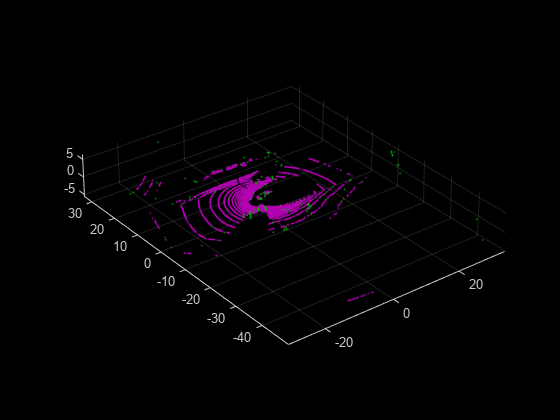show
Description
show( displays the specified lidar
odometry and mapping (LOAM) feature points. Surface points are displayed in magenta and
edge points are displayed in green.points)
show(
specifies additional options using one or more name-value argument. For example,
points,Name=Value)MarkerSize=5 sets the approximate diameter for the
marker, in points, to 5. Unspecified arguments have default
values.
ax = show(___)
Examples
Input Arguments
Name-Value Arguments
Output Arguments
Extended Capabilities
Version History
Introduced in R2022a
